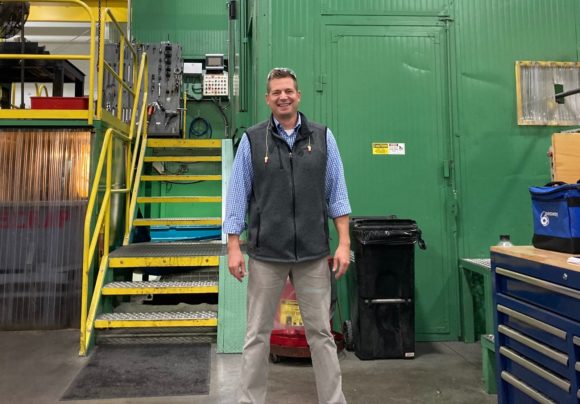Our guest on today’s podcast is Joe Bennett, Vice President of Sales at Seaway Bolt and Specials, a privately held cold heading company in Columbia Station, Ohio, founded in 1957.
In the cold heading process, coiled steel is cut into slugs, which are then hit multiple times, ultimately pounding them into a desired shape. The cold heading process is capable of producing several hundred pieces per minute. Some cold-headed products are net shaped blanks that are shipped to machining companies who then finish the parts.
Main Points
Seaway has historically focused on cold heading one product family, taper threaded pipe plugs ranging from 1/16” to 2” diameter. The pipe plugs are used in a wide variety of industries such as automotive, oil and gas, and agriculture, going into products like transmissions, pumps, compressors, and engines. Joe describes a threaded pipe plug as an inside out nut. It looks like a nut, but its threads are on the outside. They are produced by cold heading a blank followed by thread rolling. Seaway produces 100 million pipe plugs a year, exporting 30% of its production. A few years ago, the company decided it needed to make a new part family if it wanted to keep growing. Its team decided the logical course would be to cold head female tubular fittings to match its male pipe plugs.
To cold head its pipe plugs, Seaway uses machines called nut formers. To make the new tubular parts the company purchased three machines called parts formers, which have the capability to make more highly engineered parts than nut formers. Joe says the new machines stand two stories high, have the footprint of three conference rooms and weigh 400,000 pounds each.
The used machines cost several million dollars to purchase and will take millions more to rebuild. Joe says National produced around 18 of the type of 1.5” cold heading machines Seaway purchased. GM was their original owner, buying them new in the 1970s.
Prior to working at Seaway, Joe worked in sales for 10 years at a large cold headed parts distributor in the Columbus, Ohio, area. Six years ago, he took a job at Seaway because he preferred to work for a privately held, smaller company with around 70 employees, where he felt he could make a significant impact.
Joe beams about Seaway’s philosophy of running the company with a “first class” management style. He and the company’s owner, Ray Gurnick, offered to cover a roundtrip plane fare for me to come to the company and interview them in person. I unfortunately had to take a raincheck.
Seaway pays 100 percent of higher eduction costs for its employees. The company has three holiday parties a year and regularly brings in food trucks to celebrate company achievements. It offers profit-sharing and gives regular bonuses. Its shop bathroom has been redone in marble.
Seaway uses open book management, showing its employees the company’s financials on a quarterly basis. The purpose of open book management is to keep employees invested in the company’s success and guide them how do their jobs in the best way to maximize productivity. Also, including employees in the management process makes them feel valued, which can boost performance and satisfaction.
Every Friday, production at Seaway stops for the last half hour of the day so employees can clean the shop–cold heading shops happen to be notoriously filthy. Afterward, the quality department takes photos around the shop and reports to the various departments how well they cleaned up. Joe says that when visitors come to Seaway they are wowed by the shop’s cleanliness, but more importantly, the cleanliness creates a pleasant working environment for Seaway’s people.
Though Seaway is ambitiously expanding its product lines, the company does not aspire to be like its larger competitors. Joe says the company’s strategy is to do all the little things better than its competition. This will attract the best talent to work there, which in the end will lead to success.
Question: If you could buy any new equipment for your shop, what would you buy?
Podcast: Play in new window | Download



3 Comments
Fascinating podcast and blog!
A comment from one of my biggest and most important fans!
I would get a new TMZ 867, or TMZ 842. With a Cucchi loader.